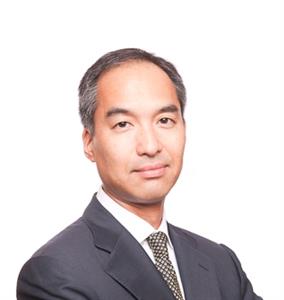One myth of investment is that active and passive investment strategies are so distinct that investors must choose one or the other. The reality is that active expertise can potentially enhance the returns of investors committed to a passive, index-linked strategy. The objective of our model - the first of its kind in Japan - is to contribute to index returns through engagement, targeting companies with both high index weights and considerable potential to benefit from constructive engagement.
The advantages of such an integrated model is that it combines the best of passive and active strategies. A passive approach need not consider economic or business cycles so it’s easier to make long-term commitments, while an active approach has little tolerance for downward cycles - i.e. underperformance - and offers the freedom to give up on engagement by selling the shares.
We can apply the traditional active investing skills of fundamental analysis and stock selection to identify company-specific issues and choose engagement targets, with the objective of partnering with companies to incorporate changes that improve performance and valuations. This combination of passive portfolio management and active engagement is particularly adept at exploiting large cap ‘value trap’ situations, where a company’s underperformance can drag down its index.
Before engaging, we first estimate a target company’s potential fair value, or the scale of deviation from what we believe is its reasonable fair value, i.e. the value gap. A company has unappreciated value when its market value is far below its reasonable fair value over a long period of time. In these cases, we look for problems the company might have in communicating with the market. We also look for cases of unacceptable value, when a company’s return on capital is far below its cost of capital, and we offer our advice for why this might be.
A key characteristic of our engagement is that it is discreet. We do not seek to make our analysis public, and we prioritise face-to-face meetings rather than issuing open letters to boards with our recommendations. One clear sign that companies value the potential impact of our engagement is that they are increasingly taking the onus to initiate engagement meetings with us.
Source: Fidelity International, December 2018
We can't relax
Since 2015, when Japan introduced its Corporate Governance Code and revised its Companies Act, we have seen other signs of progress including better cross-division communication within companies, particularly between investor relations, legal, finance, corporate planning, and other departments. We are also now witnessing more engagement with external directors, as well as an interactive loop of ‘dialogue - feedback - action - dialogue’ to put changes in motion and assess their impact.
But there are still several areas for improvement. Although growing numbers of companies are proactively working on enhancements, the dispersion among companies from ‘continuously pursuing best practice’ to ‘doing the bare minimum’ is widening. We can’t relax until we reach the tipping point and best practice becomes widely adopted. A perception gap remains between companies and investors, and there is still a focus on ‘obligation-oriented’ governance rather than true ‘growth-oriented’ governance.
Moreover, while engagement activities are reported by asset managers, their outcome in the form of enhanced corporate value can be hard to discern. We therefore need to continue to provide clear monitoring points and measure the value added, which is one of the cornerstones of our approach through our ‘value creation diagnosis’ reports.
We expect Japan’s regulatory reform to continue to provide a supportive environment for constructive dialogue and change. When it comes to engagement, what is good for companies is also good for long-term investors, leading to greater transparency and sustainability, and potentially higher returns.







































